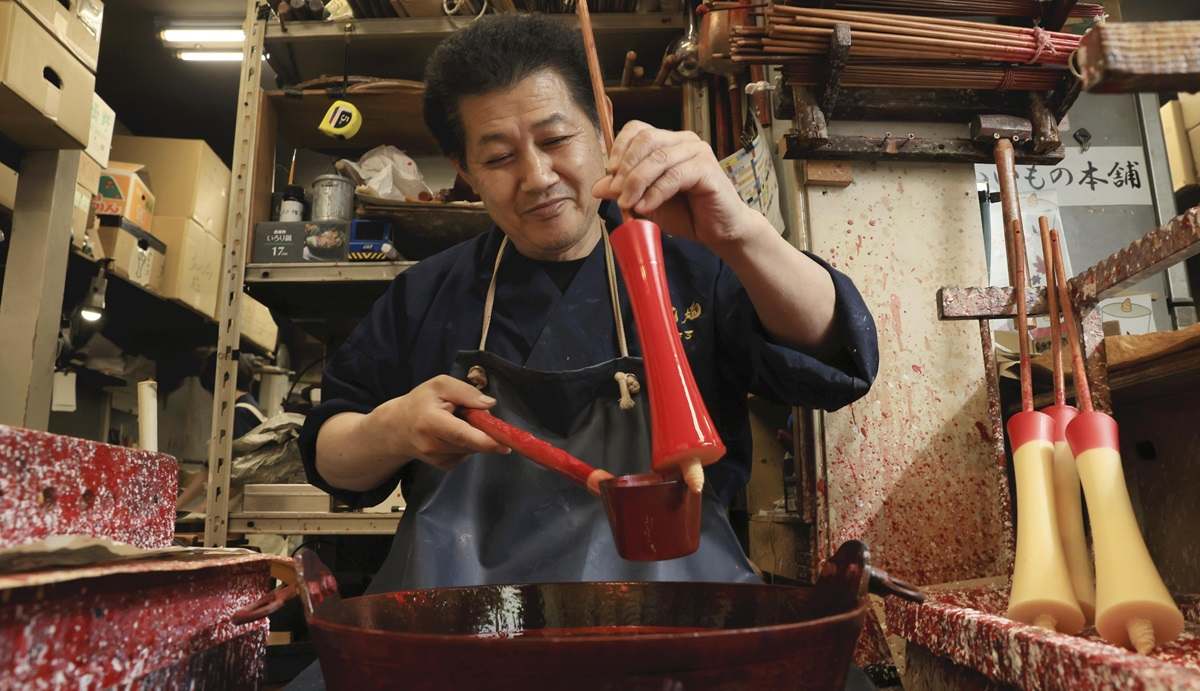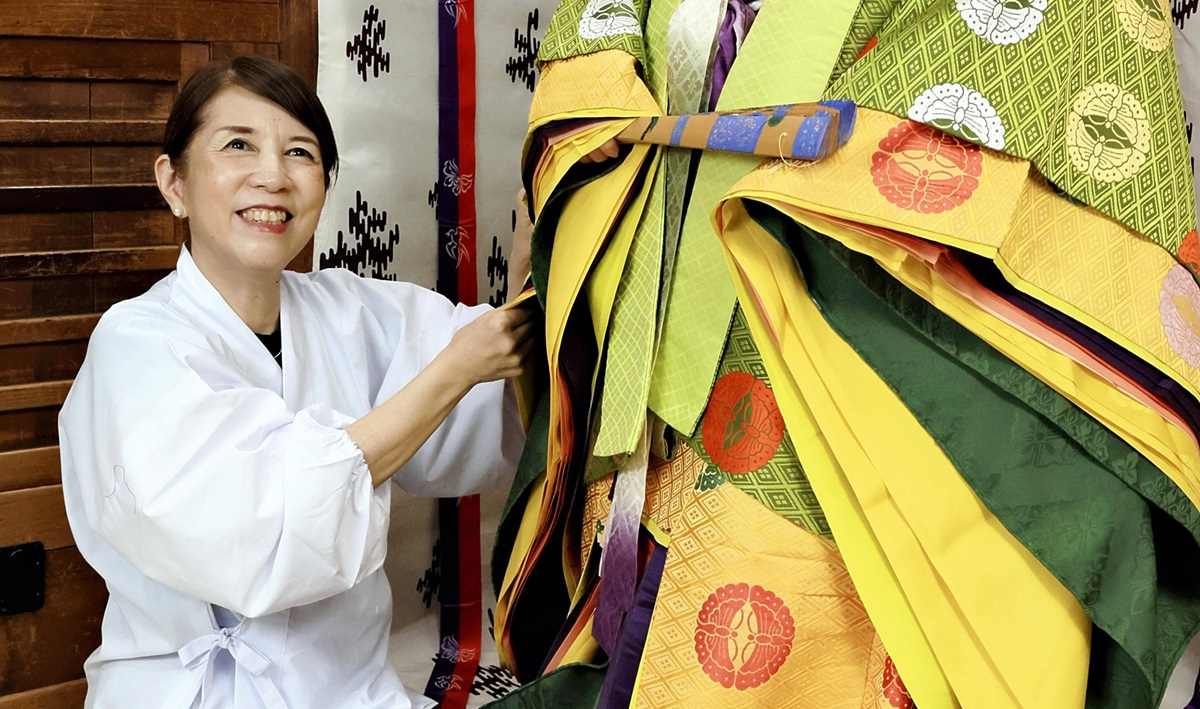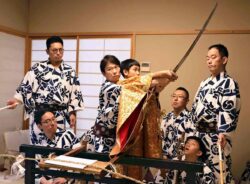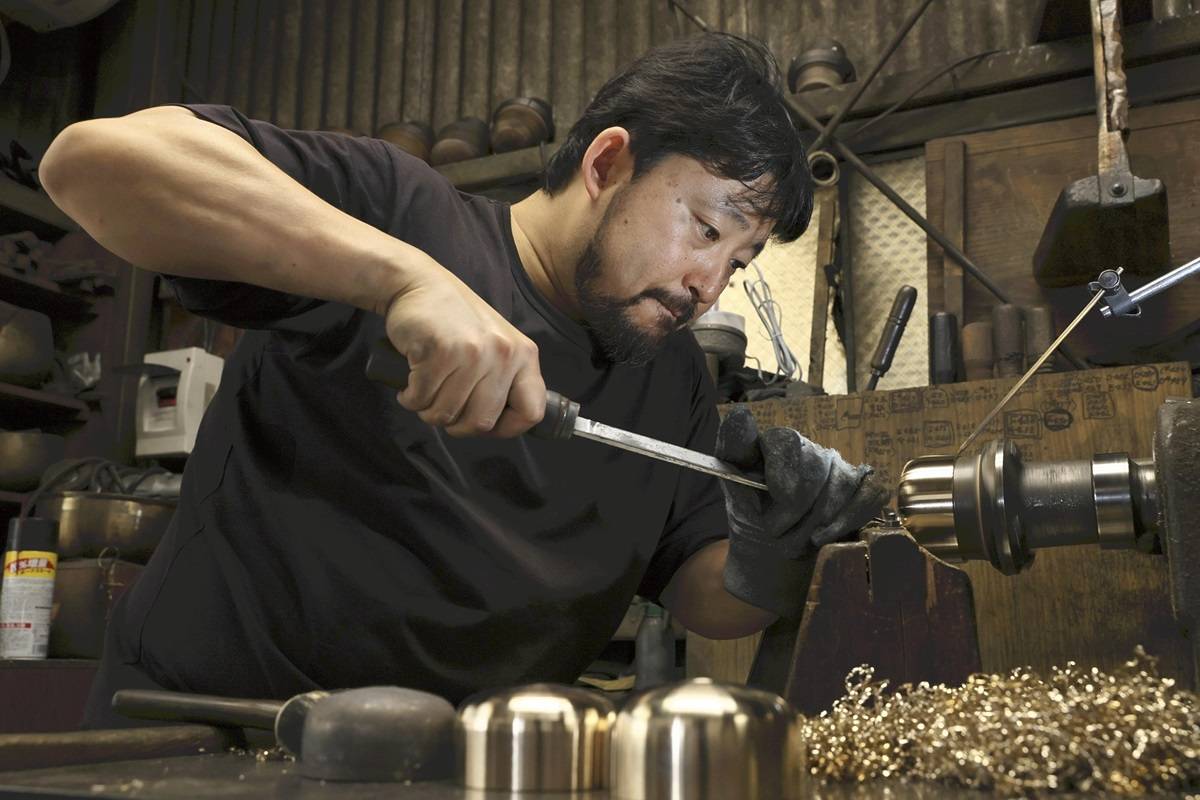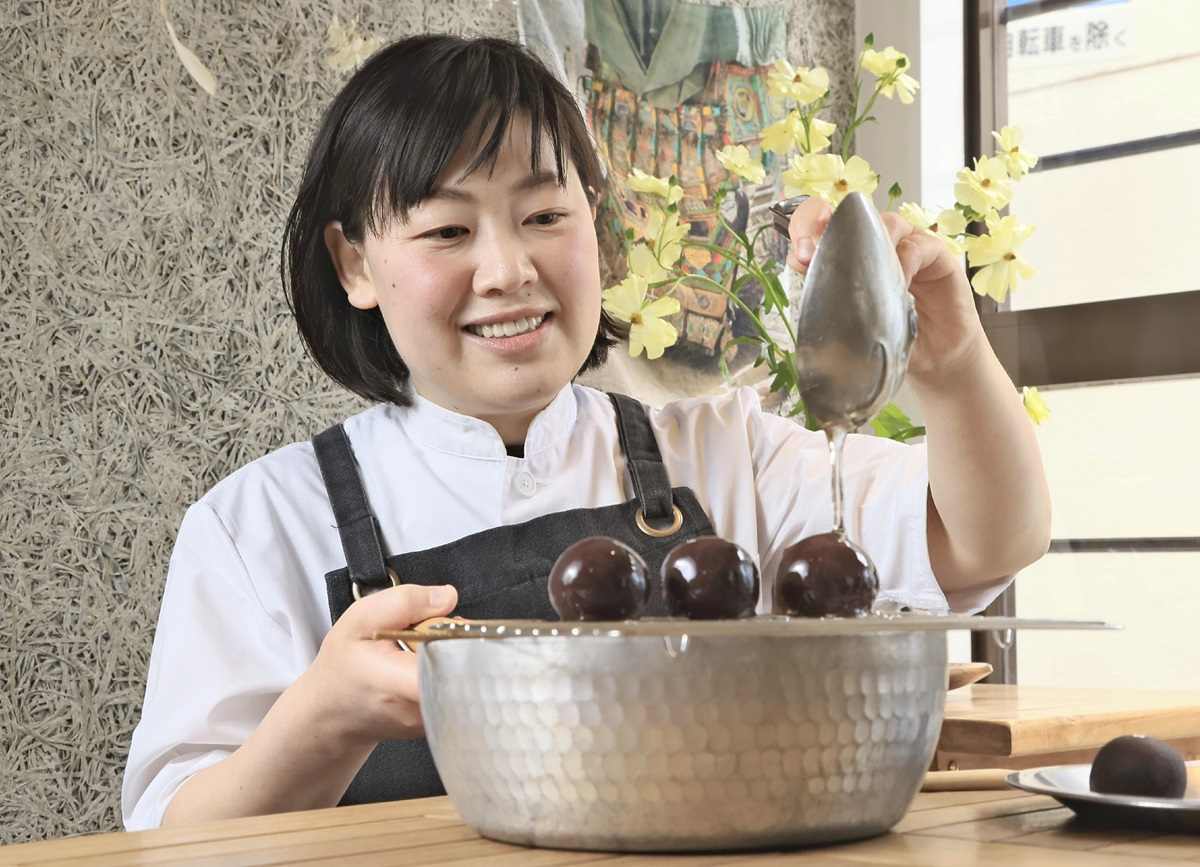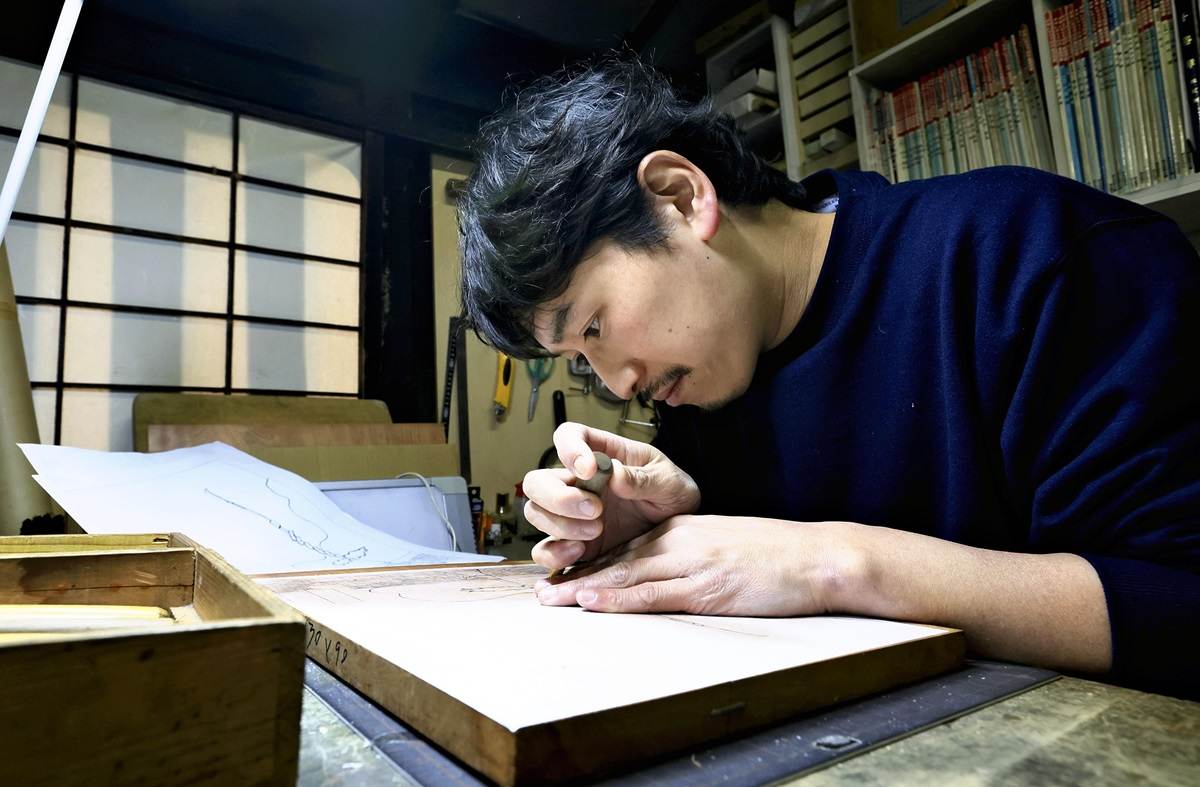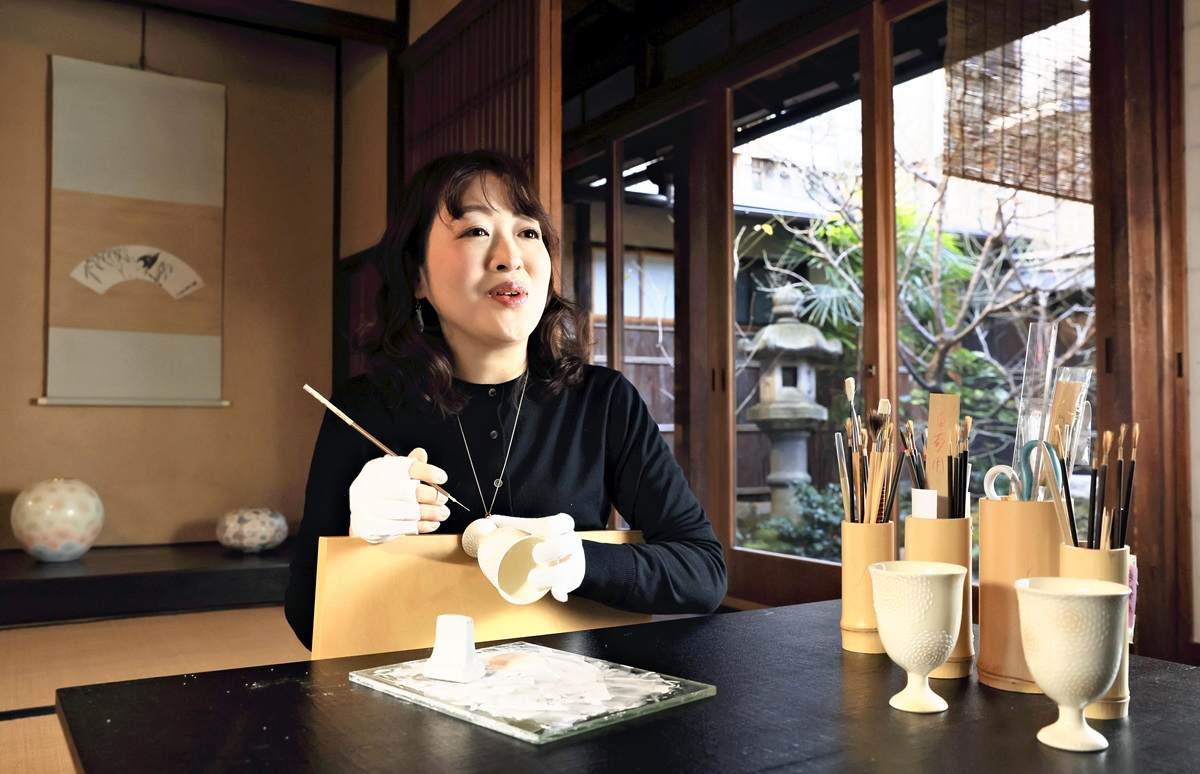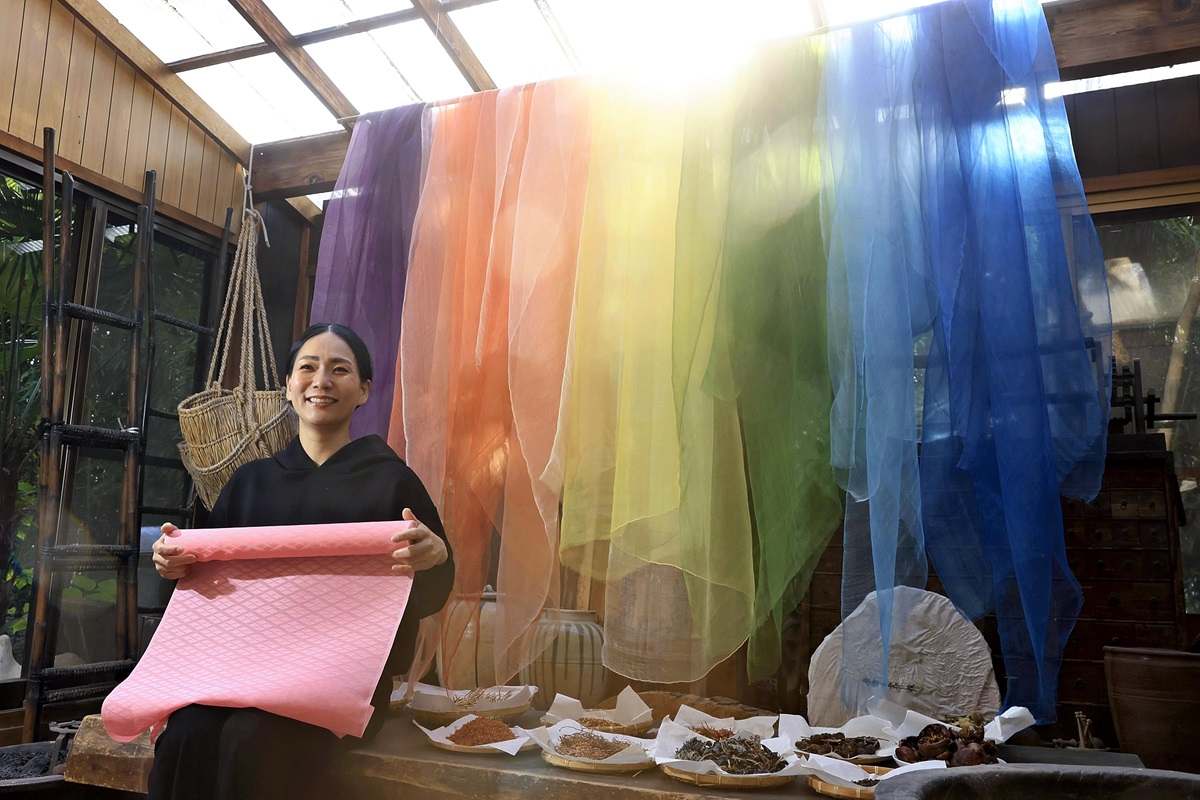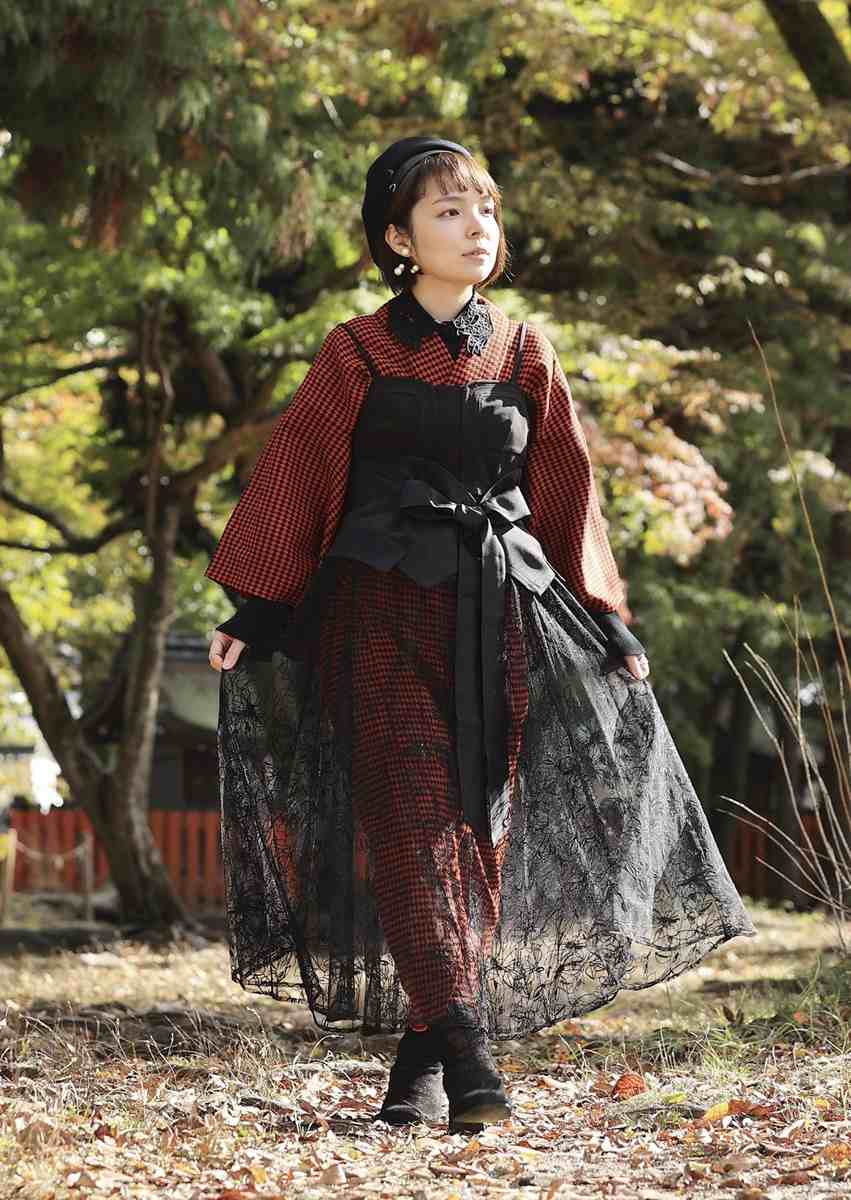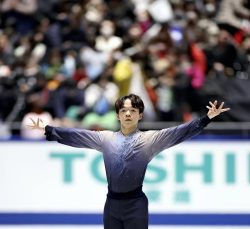Heirs to Kyoto Talent / Sculptor Creates Buddhist Statues Filled with Unchanging Beauty; Artist Makes Exquisite Works
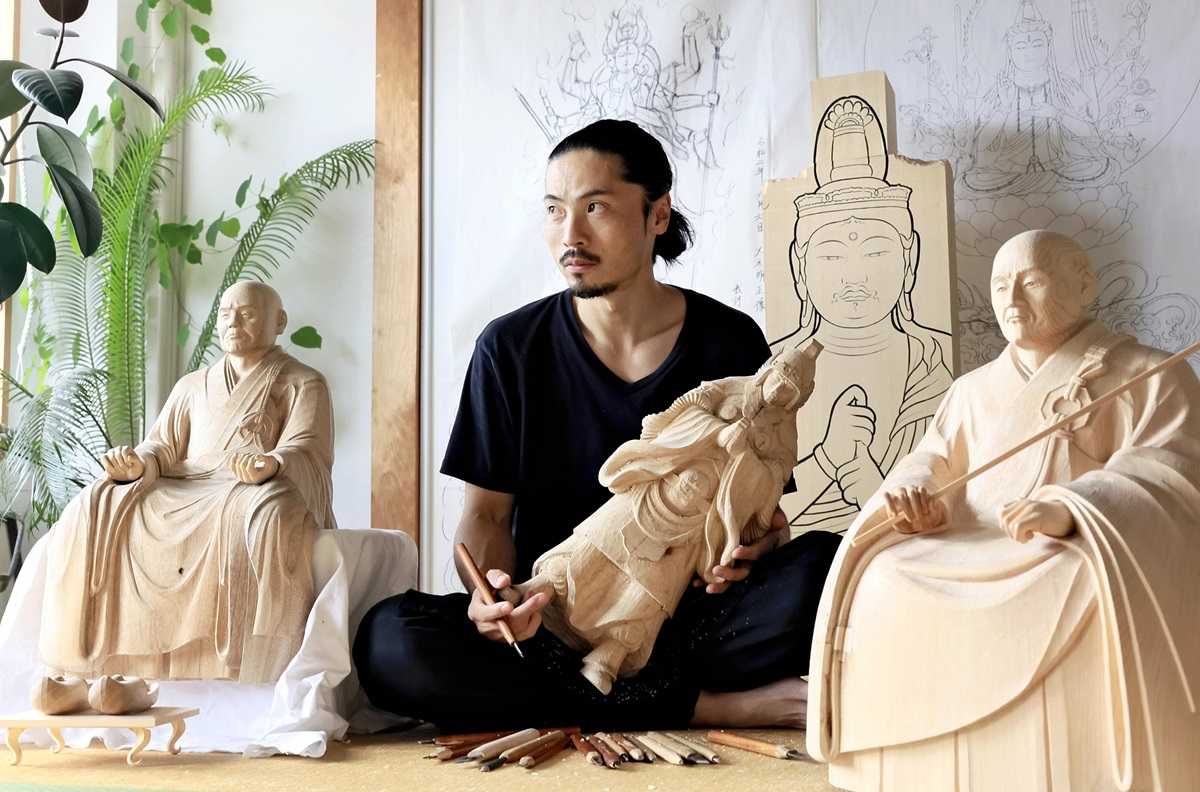
Buddhist sculptor Gakyu Miyamoto holds a statue of Idaten that he is working on in his workshop in Minami Ward, Kyoto.

10:18 JST, November 2, 2024
KYOTO — On a late September day, after the burning heat of summer had subsided, as evening approached and the cicadas stopped buzzing, the sound of wood being carved by hand filled an otherwise quiet workshop in Kyoto’s Minami Ward.
Crunch, crunch, crunch…
Gakyu Miyamoto sat on a tatami mat inside, carving a statue of the Buddhist guardian deity Idaten. He occasionally blew on the surface, sending wood shavings fluttering away and revealing the wooden statue’s robe, which was gradually taking on a cloth-like texture.
Miyamoto plunged into the Buddhist sculptor’s profession from the world of fashion. That is why his powers come on full display in carving clothing and accessories. When he is going to carve clothing on a statue, he folds a real piece cloth and faithfully recreates its drapes on the sculpture. He also designs each statue’s accessories himself, sometimes incorporating motifs from Western art styles such as Art Nouveau.
The style of Miyamoto’s work has earned him a good reputation, and he has received many work orders from famous temples and shrines, including to repair the standing statue of Amida Nyorai (Amitabha) at Kiyomizu Temple and to create statues of shishi and komainu (lions and guardian dogs) for Shimogamo Shrine.
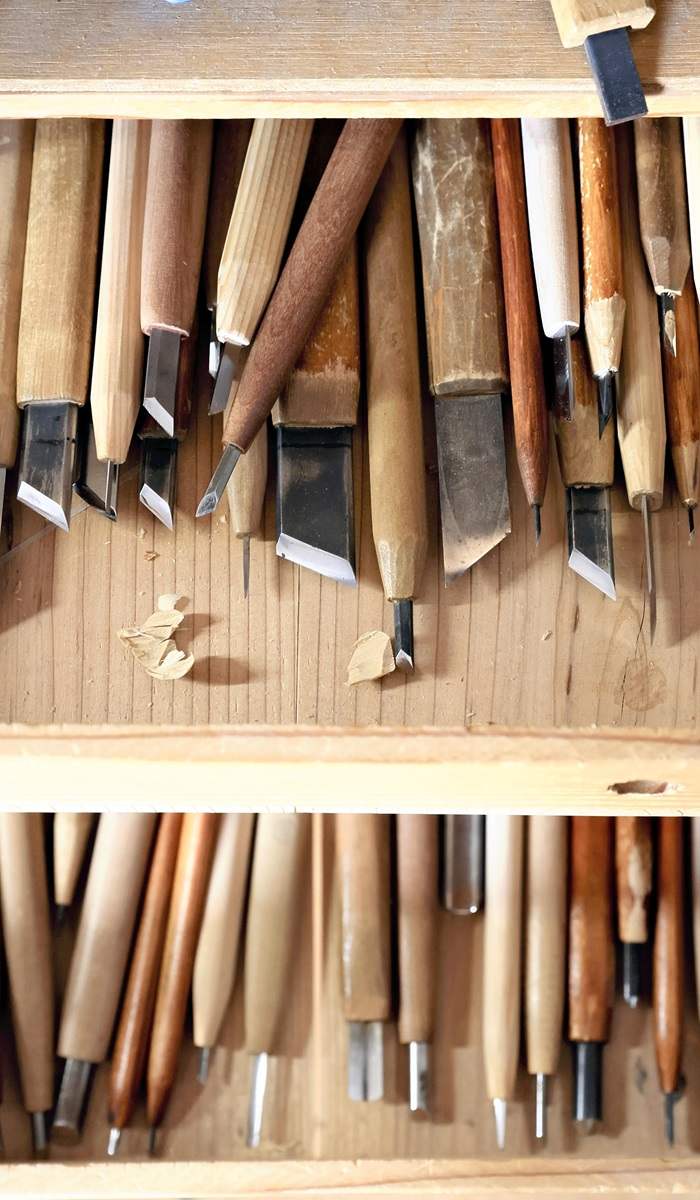
A wide variety of carving knives that Miyamoto uses
He also has a lot of fans. On the social media platform X, formerly Twitter, a photo of a statue by him was described as “too handsome for a Buddhist statue,” and received 60,000 “likes.” He has more than 70,000 followers on his social media accounts.
Currently, he has a list of about 100 projects to complete, with delivery dates stretching out as far as the year 2041.
He works hard every day, aiming to create “‘Reiwa era statues’ of the kind that only I can make.”
Gears perfectly fit
Miyamoto was born in Fushimi Ward, Kyoto, not very far from his current workshop. As a child, he would lose track of time drawing on the blank backs of flyers whenever color pencils were available. When he was in junior high school, he became interested in fashion and longed to become a fashion designer.
After graduating from high school, he studied clothing at a junior college in Kyoto and then went to a vocational school in Tokyo on a scholarship.
However, he was so confident of his talent that he was not satisfied with his studies at the school. He graduated having hardly attended at all. After returning to his hometown, he lived in a cheap apartment with no bathtub and worked part-time to earn a living while trying to become a professional painter.
About six months later, as he began to worry if this was the right way to live, his older brother suggested that he help out a Buddhist sculptor. The sculptor was an acquaintance of his brother and was looking for someone good at painting.
Miyamoto visited the sculptor’s workshop near Kiyomizu Temple and was given the task of coloring a Buddhist statue. Although it was new to him, he was immediately fascinated by the work.
“Fashion items are consumed one after another, but Buddhist statues last for centuries. Are [the artists] thinking about the time after their deaths as they do the job?” Miyamoto thought so and was overwhelmed by the scale of the work.
While helping out in the workshop, Miyamoto noticed that making Buddhist statues has a lot in common with dressmaking. The knowledge of cloth textures and human anatomy that he had gained from dressmaking was useful for making sculptures.
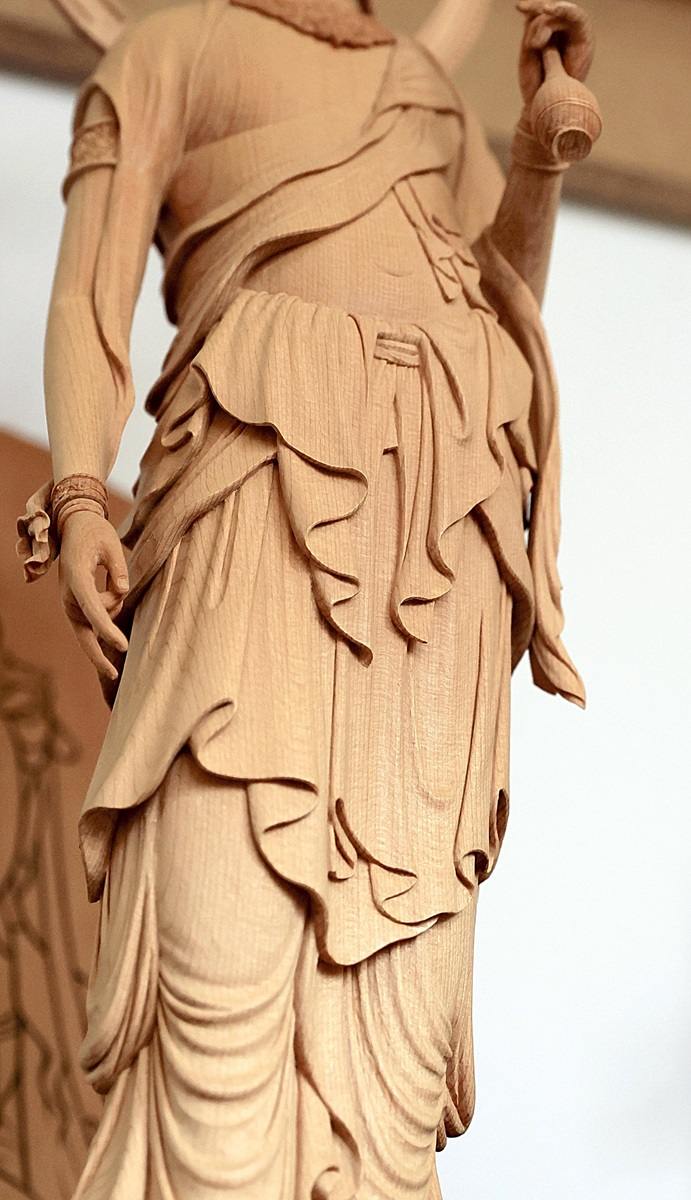
As Miyamoto studied dressmaking, he is very careful about the draping of clothes on his statues.
“The gears of my life perfectly fit into place and began to turn,” he said. He quit his part-time job and officially became apprenticed to the sculptor at the age of 25.
From then Miyamoto sculpted Buddhist statues almost every day from early in the morning until late at night. He felt he had to work three or four times harder than other people because he started late. After nine years of training, he became independent in 2015 and took the sculptor name “Gakyu.”
Gakyu is made up of two Chinese characters that mean “self” and “rest.” He chose the name as a self-discipline because his teacher had often told him: “Your flaw is that you are strong-willed.”
Universal beauty
At the beginning, Miyamoto received no work orders. But after he started showing his creations at exhibitions, he began to get jobs. His work became popular on social media sites, which led to an increase in the number of orders.
At the moment, he is working concurrently on 30 different statues.
His emotions and physical condition influence his work. His high spirits give impact to his statues and even inspire their frightening facial expressions. As he works in parallel on statues of completely different types with totally different characteristics, he adjusts himself by sitting in meditation and centering himself, then works on the statue that best suits his condition.
To produce his beautiful Buddhist statues, Miyamoto studies sculptures made not only in Japan but also overseas. To give his work a sense of modernity, he sometimes incorporates elements borrowed from show business celebrities into his statues. He also makes efforts to learn about the esthetics of the times from the reactions to his work on social media sites.
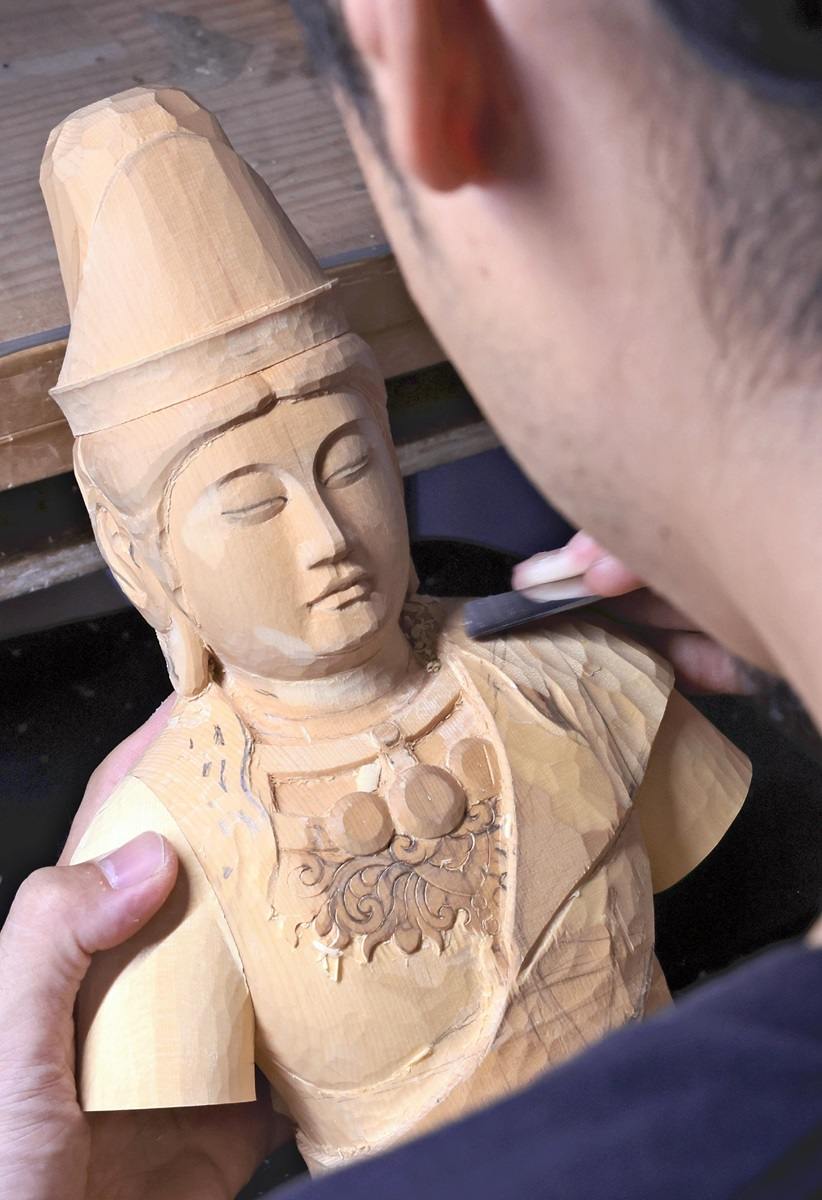
Miyamoto’s carving progresses as he works with the wood.
He has also experienced setbacks in his pursuit of universal beauty.
When he saw the seated statue of Miroku Bosatsu (Maitreya) at an exhibition, he was intimidated by its transcendent divinity. The statue of Kyoto’s Daigo Temple was work by Kaikei, a famous sculptor from the 12th-13th centuries. He said he thought, “I’ll never be able to reach this level.”
What made him intimidated, however, soon became his new goal.
“At some point before I leave this world, I want to carve a supreme Buddha statue of unchanging beauty.”
Driven by the ambition, his chisel breathes a thousand years of life into his sculptures.
***
If you are interested in the original Japanese version of this story, click here.
"Features" POPULAR ARTICLE
-

Sanrio to Open Museum in Yamanashi Pref. Dedicated to Founder, Exhibits Include Hello Kitty, Other Characters
-

Autumn Foliage Surrounds Visitors to Tokyo’s Showa Kinen Park
-

My Daughter No Longer Speaks to Me, But I Want to See Her and My Grandchild
-

Kumamoto: Public Bath Refurbished as Library Where You Can Chat, Take Photos
-

Frozen Vegetables: Demand Rises for Convenient, Tasty Domestic Produce
JN ACCESS RANKING
-

Keidanren Chairman Yoshinobu Tsutsui Visits Kashiwazaki-Kariwa Nuclear Power Plant; Inspects New Emergency Safety System
-

Imports of Rare Earths from China Facing Delays, May Be Caused by Deterioration of Japan-China Relations
-

University of Tokyo Professor Discusses Japanese Economic Security in Interview Ahead of Forum
-

Tokyo Economic Security Forum to Hold Inaugural Meeting Amid Tense Global Environment
-

Japan Pulls out of Vietnam Nuclear Project, Complicating Hanoi’s Power Plans
